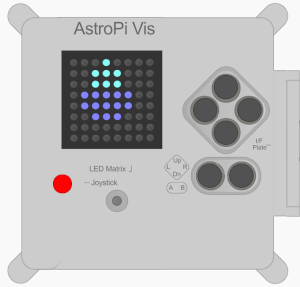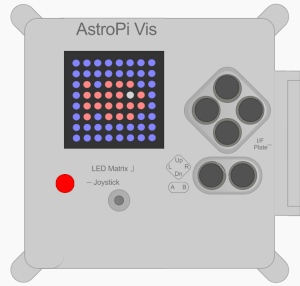Programming for Space - Astro Pi Workshop
Veröffentlicht: 03.05.2021
Verfasst von: Luis,
Lesedauer ca. 2 Minuten
Space, infinite expanses. The year is 2021, and these are the adventures of young developers who write programs together to support the work of the crew of the International Space Station ISS. This is Astro Pi Mission Zero!
The aim of the workshop was to develop a program to measure the current humidity on board the ISS and then communicating this to the astronauts in a personalized message. For this purpose Astro Pi is used on the ISS for this purpose: a small computer with various sensors to measure the current temperature, humidity and air pressure as well as an LED matrix consisting of eight by eight LEDs that can be individually controlled. LEDs that can be controlled individually. However, in order to be able to test the program locally, we used an emulator emulator that simulates the functionality of the Astro Pi on a website.

We started our project with a few simple text outputs on the LED matrix in different colors and at different playback speeds. different colors and different playback speeds to familiarize ourselves with the unfamiliar display, which is somewhat reminiscent of old displays from old streetcars. We then moved on to reading out the sensor for humidity. humidity sensor. In order to be able to use the value from the sensor in the text, we first had to reduce it to a reasonable number of decimal places. to a sensible number of decimal places. As the LED matrix also gave us the option of displaying small images, we finally visualized the current humidity value as a suitable graphic. Here we needed a bit of artistic creativity was required! However, our young developers were not deterred by this and and cheerfully created images of spaceships and water droplets as well as various colorful gradients:

After this first development phase was completed, we received a visit from a CoderDojo from South Africa. We discussed our progress so far and the mentees were given the opportunity to present their projects to each other in small groups, to present their projects to each other. Afterwards, various elements from all of the group’s programs were group were combined to create a complete program. After each group had created an individual solution for the Astro Pi project, the programs were sent in and will now be uploaded to the ISS in May and executed there! in May and executed there!

 Deutsch
Deutsch العربية
العربية
